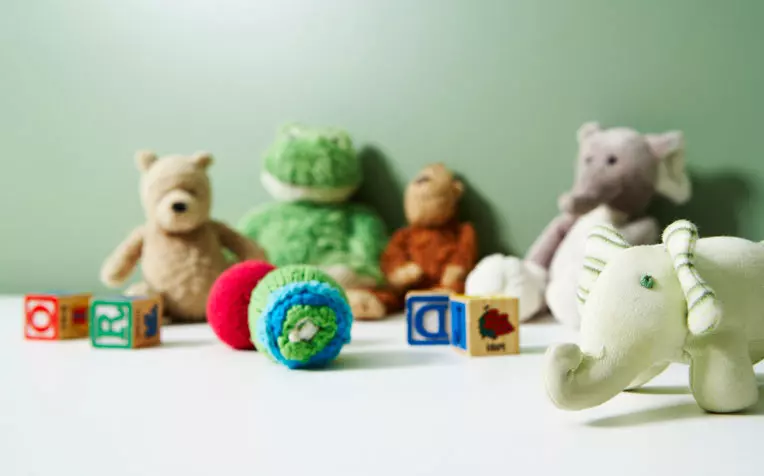
Choose the Right Toys
Toys are age-graded for safety. Age-grades are guidelines that reflect the toy’s safety based on:
- Any choking or safety risks
- The physical skills a child needs to play with the toy
- How well a child can understand how to use the toy
- The interests, needs and abilities at different stages of a child’s development
With this in mind:
- Choose toys that match your child’s age and skills.
- Pick toys made of natural materials, like cotton, wool and uncoated wood.
- Avoid old wooden toys with chipped paint. The paint may contain lead.
- Check that toys made of fabric can be washed.
- Choose toys labeled phthalate-free, PVC-free and BPA-free, avoiding plastic toys with recycling codes #3, #6 and #7.
- Choose paints, crayons, markers and other art materials that say “non-toxic.”
- Buy the safety gear that goes with the item, such as a helmet with a bike.
Watch for Toy Dangers
- Sharp edges and sharp points. Toys for older children may have sharp points or edges that can hurt a small child. Avoid toys made from thin plastic that can break easily. Also avoid giving toys with metal parts to toddlers and babies.
- Small toys and toys with small parts. To prevent choking in kids 3 or younger, make sure that toys and parts cannot fit inside an empty toilet paper tube or a choke tube. Soft baby toys should be large enough that they can’t be swallowed even when they are squished down. Check stuffed animals for eyes, noses and parts that can come off. Put small toys and toys with small parts out of reach when young ones are around.
- Loud noises. Toys that make shrill or loud noise, such as toy cap guns, can damage your child’s hearing. Read warning labels for how to use them safely. Try toys in the store to check how loud they are.
- Cords and strings. Toys with cords or strings longer than 7 inches can be harmful for babies and very young children. They can get wrapped around a child’s neck. Never hang toys with strings, cords or ribbons in cribs or playpens. Remove crib gyms when your child can pull up on their hands and knees.
- Toys that fly or shoot objects. These can badly injure the eyes. Avoid toys that can fire things not made for use in the toy, such as pencils or nails. Arrows used by children should have soft tips made out of cork or rubber. Have your child wear safety glasses if you allow them to use toys that shoot objects.
- Electric toys. Buy only toys that say “UL Approved” (Underwriters Laboratories). Toys that heat up are all right for children older than 8 years when used with an adult. Avoid fixing or making electric toys yourself. Make sure battery-operated toys have a cover that closes with screws to keep the batteries secure inside the toy.
- Toys with magnets. If magnets come off and your child swallows two or more of them, they can stick together inside your child’s body. This can cause injury or death. Young children should not play with toys with magnets. If older children play with toys with magnets, warn them not to put any magnets in their mouth.
Remember that the best way to protect your children is to watch them while they play.
